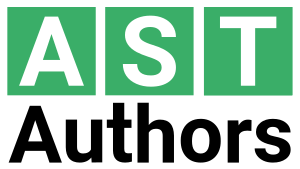
In our globalised world, clear communication is essential, especially in technical fields where precision matters. Simplified Technical English (STE) has become a key tool for making complex technical language more accessible. Originally developed for the aerospace industry, STE is now employed across various sectors to improve understanding among diverse audiences.
At its core, Simplified Technical English is a controlled language that promotes clarity through a set of standardised rules. These rules reduce ambiguity and help make technical documents easier to read. By limiting vocabulary and simplifying grammar, STE minimises misunderstandings caused by complex language or cultural differences. This is particularly important in industries where safety and compliance are critical.
One standout feature of STE is its use of a standardised vocabulary. Writers select from an approved list of words and phrases, significantly lowering the risk of misinterpretation
One standout feature of STE is its use of a standardised vocabulary. Writers select from an approved list of words and phrases, significantly lowering the risk of misinterpretation. This vocabulary avoids jargon and idiomatic expressions that might confuse non-native speakers or those unfamiliar with specific technical areas.
STE also encourages the use of active voice and straightforward sentence structures. This direct approach not only makes the text more engaging but also helps readers understand complex concepts more easily.
Clear formatting is another essential aspect of STE. Well-organised documents with headings, bullet points, and numbered lists make it easier for readers to find information quickly. This is particularly useful in instruction manuals, maintenance guides, training materials, safety instructions, and technical specifications, where quick reference is often crucial.
The advantages of using STE go beyond better comprehension. Organisations that adopt STE often see reduced training times and fewer errors in operations. By ensuring that everyone—from engineers to end-users—can understand complex information, STE promotes a culture of safety and efficiency. In fields such as aviation, manufacturing, and healthcare, where miscommunication can lead to serious consequences, this clarity is vital.
…make it easier for readers to find information quickly. This is particularly useful in instruction manuals, maintenance guides, training materials, safety instructions, and technical specifications, where quick reference is often crucial.
STE is not just beneficial for English-speaking audiences. Many organisations now operate in multilingual environments. STE provides a framework that can be easily translated into other languages, making it an invaluable resource for international teams. By creating a common understanding, STE helps reduce misunderstandings across cultural boundaries.
Implementing Simplified Technical English may require an initial investment in training, but the long-term benefits are significant. Companies that focus on clear communication are better equipped to innovate, comply with regulations, and maintain safety standards. Moreover, clear communication can boost employee morale and customer satisfaction, leading to a more productive work environment.
Simplified Technical English is more than just a writing style; it is a strategic approach to communication that prioritises clarity. As industries evolve, adopting STE can help organisations convey critical information effectively. By fostering an environment of clear communication, businesses can improve collaboration, enhance safety, and achieve greater success. In a world where clarity is essential, Simplified Technical English is a powerful tool for navigating the complexities of modern technical communication.
